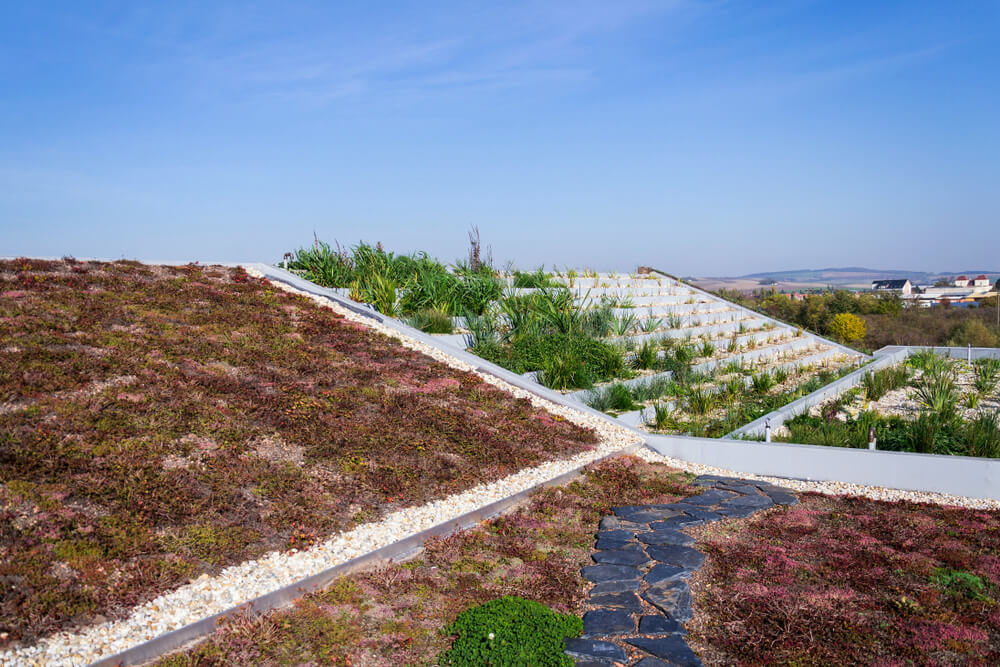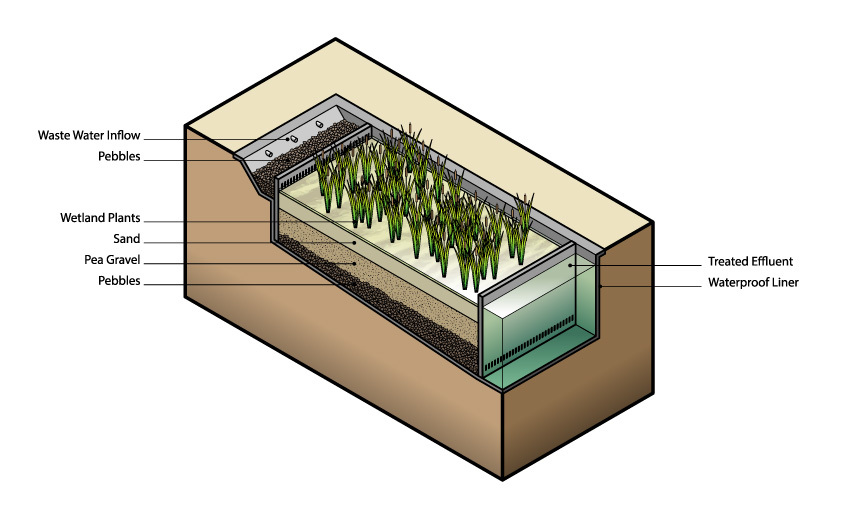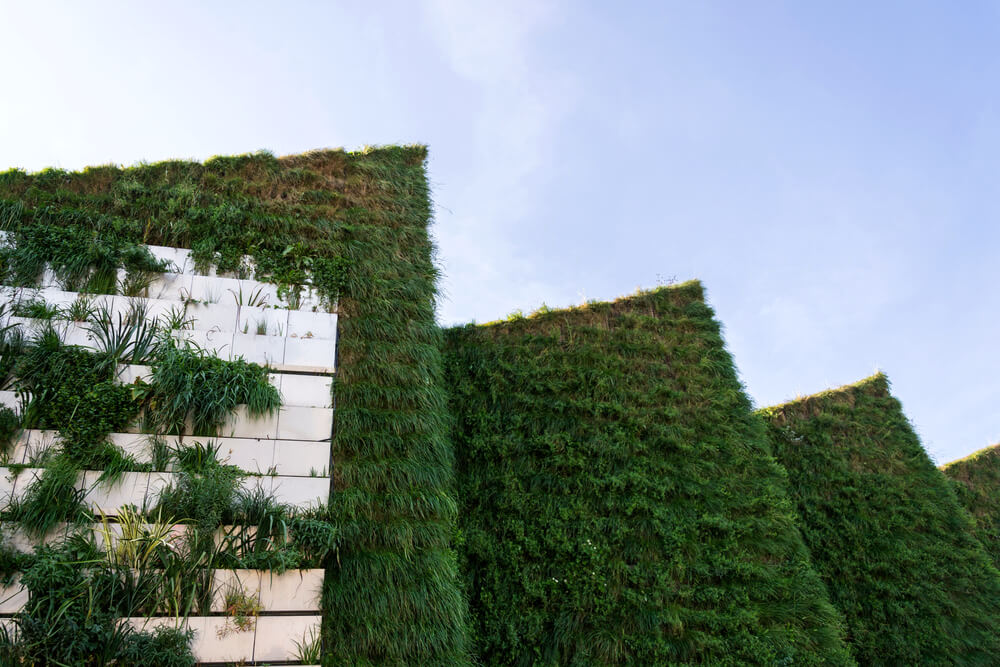Blog
Using roots for wastewater treatment? A root zone wastewater treatment plant is ideal for houses, production halls and small communities
Root zone wastewater treatment plants (WWTPs) are a quiet solution that works without electricity and looks like a garden.

What is a root zone wastewater treatment?
Root zone wastewater treatment plants are essentially shallow wetlands with a liner and living plants, filled to the brim with gravel, on top of which is a layer of humus with micro-organisms and plants.
Some of the plants can include reed canary grass, iris, common cattail, reed grass, columbine, sword grass or rush.
The root zone wastewater treatment plants apply exactly the same process to treat the water as is used in any wetlands or river.
People commonly believe that it is the roots of the plants that purify the wastewater.
In reality, however, the wastewater is treated mainly by bacteria living on the stones. But plants, which secrete oxygen into the environment through their roots, are essential for the life of some microorganisms.
What are the benefits of a root zone WWTPS?
The major advantages of root zone WWTPS are the low operating costs as well as the positive impact on the local environment. These WWTPs produce less greenhouse gases, are a safe haven for biodiversity and also make the surrounding landscape more beautiful.
Root zone wastewater treatment plants also have the advantage that they do not cause any disturbance on the property - they do not make any sound, as they operate without electricity.
Many people mistakenly believe that a root zone WWTP does not work in winter. However, the truth is that it works exactly the same as it does in the summer. In fact, it is not the plants themselves that purify the water, but the bacteria.
Throughout the year, the plants also serve as thermoregulation, so that the filter does not overheat in summer and, in turn, does not freeze in winter.
At the same time, thanks to the filter materials and the plants, the WWTP does not smell in any way. In addition, the care is minimal during the year. Maintenance consists solely of checking the level and functionality of the drain, occasionally cutting back the plants and desludging the septic tank once a year.
The service life of the entire system can be 20 years or more when operated properly.
And what about the disadvantages?
The disadvantage of root zone wastewater treatment plants, when compared to conventional wastewater treatment plants, is the need for more land for their construction. A land area of approximately 2 to 5 square metres per inhabitant is required to ensure proper treatment efficiency.
Given the area required, root zone WWTPs are thus generally more suitable for smaller communities, especially in lowland areas.
However, this land does not remain unused. It is essentially a pretty garden that does not need to be watered and is easy to maintain.
At the same time, there are already solutions to implement a root zone technology on the facade or roof of a house or production hall, making full use of the space available on the land.

Slovakia is falling behind its neighbours
You could count the official number of root zone WWTPs in Slovakia on the fingers of our hands. According to experts, excessive bureaucracy can also be one of the obstacles.
While in Germany it is enough to fill in a single-sheet form at the local authority, in Slovakia such a project has to go through a separate construction procedure, which requires complete project documentation. That is why most of these wastewater treatment plants in Slovakia are built illegally.
In neighbouring Austria, there are almost 5,500 treatment plants in operation, serving 85,000 people. Similarly, the Czech Republic has 690 operational root zone wastewater treatment plants, including larger plants for municipalities with over 1,000 inhabitants.
There are also root zone WWTPs for towns of 20,000 inhabitants around the world. A notable example is one in the Moldovan town of Orhei, which, at five hectares, is one of the largest ever.
Compared to the world and our immediate neighbours, Slovakia is unfortunately falling behind in the construction of root zone systems for wastewater treatment. Making the process easier could help in the future.
The solution for cities and industry is high-quality WWTPs
Root zone wastewater treatment plants are an interesting alternative that is particularly suitable for small municipalities with sufficient land as well as decentralised parts of settlements, cottage areas or tourist facilities.
However, in industrial areas or cities, as well as for the treatment of concentrated industrial wastewater, modern and sophisticated treatment plants are indispensable.
In the 40 years of Hydrotech's existence, we have implemented more than 700 "conventional" wastewater treatment plants, which today serve production plants, municipalities or cities in 19 countries around the world.
Every day, as much wastewater is treated in our plants as a city of the size of Rio de Janeiro produces.
The advantages of Hydrotech's WWTPs are primarily the minimum space requirements, the suitable integration into the existing environment and the possibility to choose between covered and underground facilities.
In addition, we can also successfully apply an anaerobic treatment solution in which we use technology for the energy recovery of biogas.
This allows your wastewater treatment plant to produce electricity or thermal energy, which not only increases the return on investment but also contributes to better management of available resources.
More articles
Tasty bakery products and wastewater in their production
Wastewater treatment plant for the bakery is in the execution project stage. Capacity of WWTP is the same as for a city with approximately 22,000...
Teambuilding of HYDROTECH s. r. o.
A traditional sport and grill afternoon took place on 25th of April 2019. This event started with a favourite game Kubb initiated by one experienced...
Why is agriculture the biggest water polluter?
Agriculture accounts for 70% of water use, and yet counts as the world’s biggest polluter. How is this possible? Read our article and find out more...
